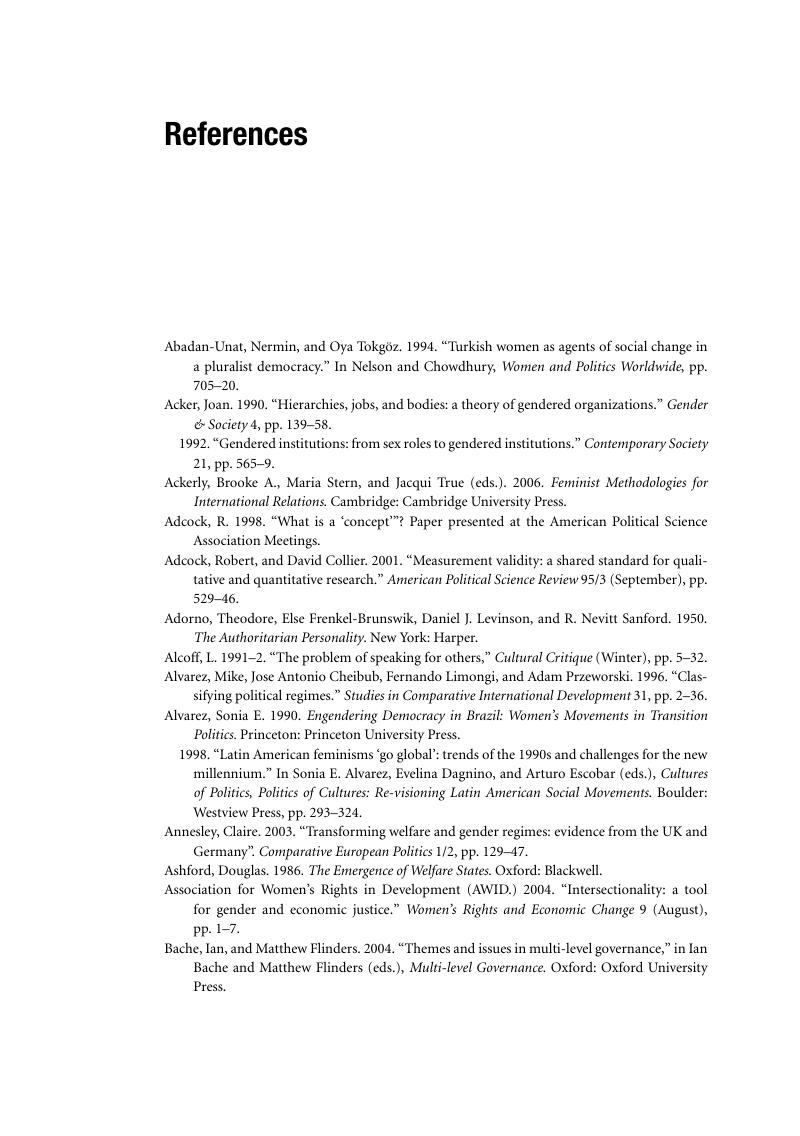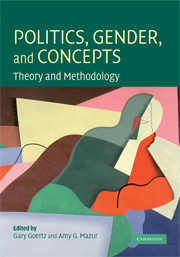Book contents
- Frontmatter
- Contents
- List of figures
- List of tables
- Notes on contributors
- Acknowledgments
- 1 Introduction
- 2 Mapping gender and politics concepts: ten guidelines
- Part I Gendering Concepts
- Part II Gender-Specific Concepts
- Appendix: A website for additional gender and politics concepts
- References
- Index
- References
References
Published online by Cambridge University Press: 06 July 2010
- Frontmatter
- Contents
- List of figures
- List of tables
- Notes on contributors
- Acknowledgments
- 1 Introduction
- 2 Mapping gender and politics concepts: ten guidelines
- Part I Gendering Concepts
- Part II Gender-Specific Concepts
- Appendix: A website for additional gender and politics concepts
- References
- Index
- References
Summary

- Type
- Chapter
- Information
- Politics, Gender, and ConceptsTheory and Methodology, pp. 271 - 302Publisher: Cambridge University PressPrint publication year: 2008



